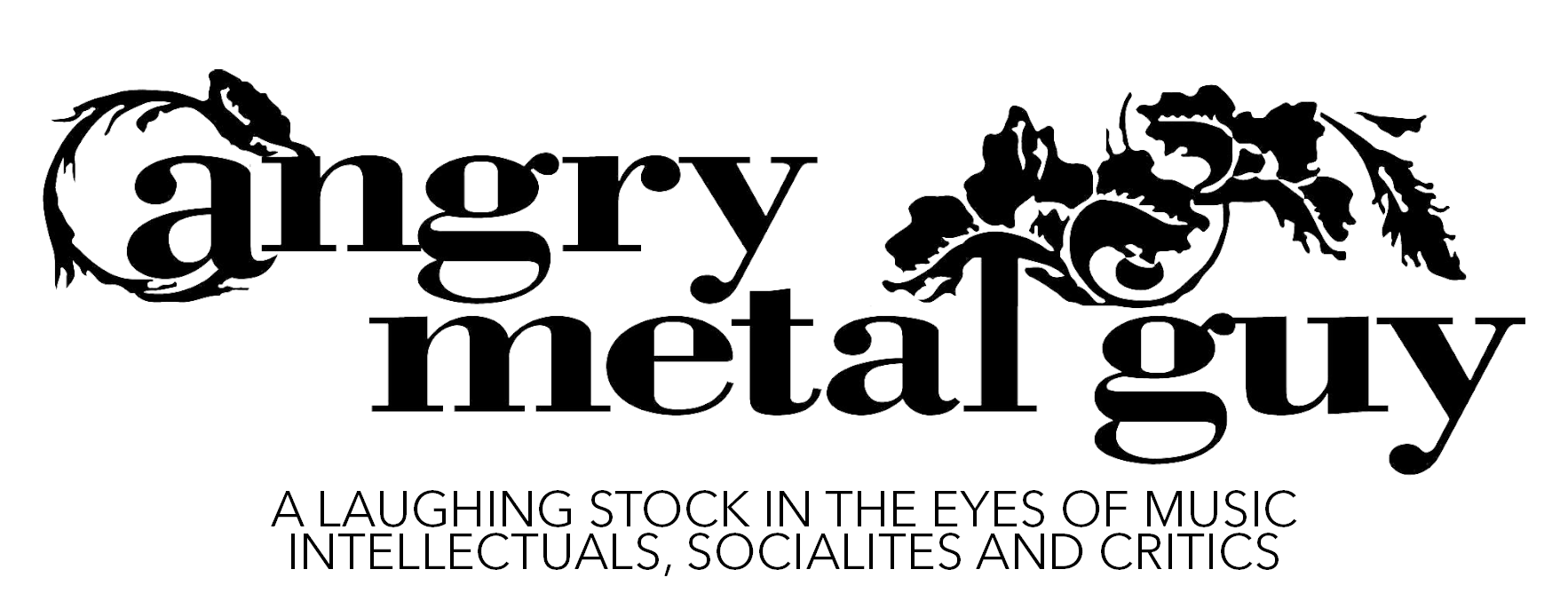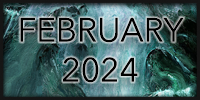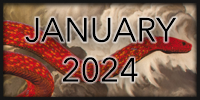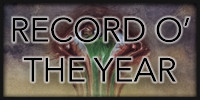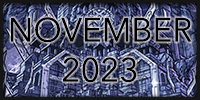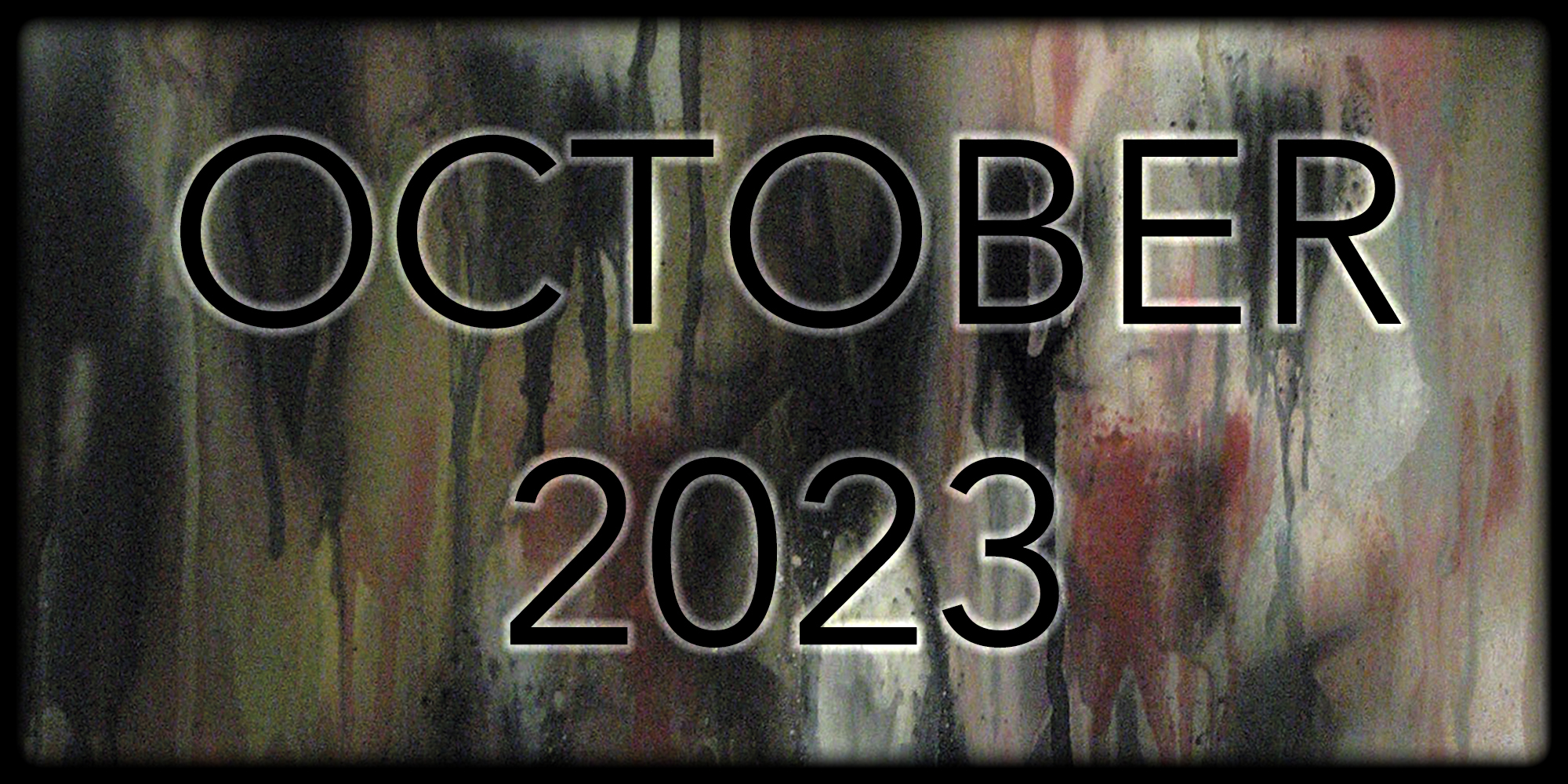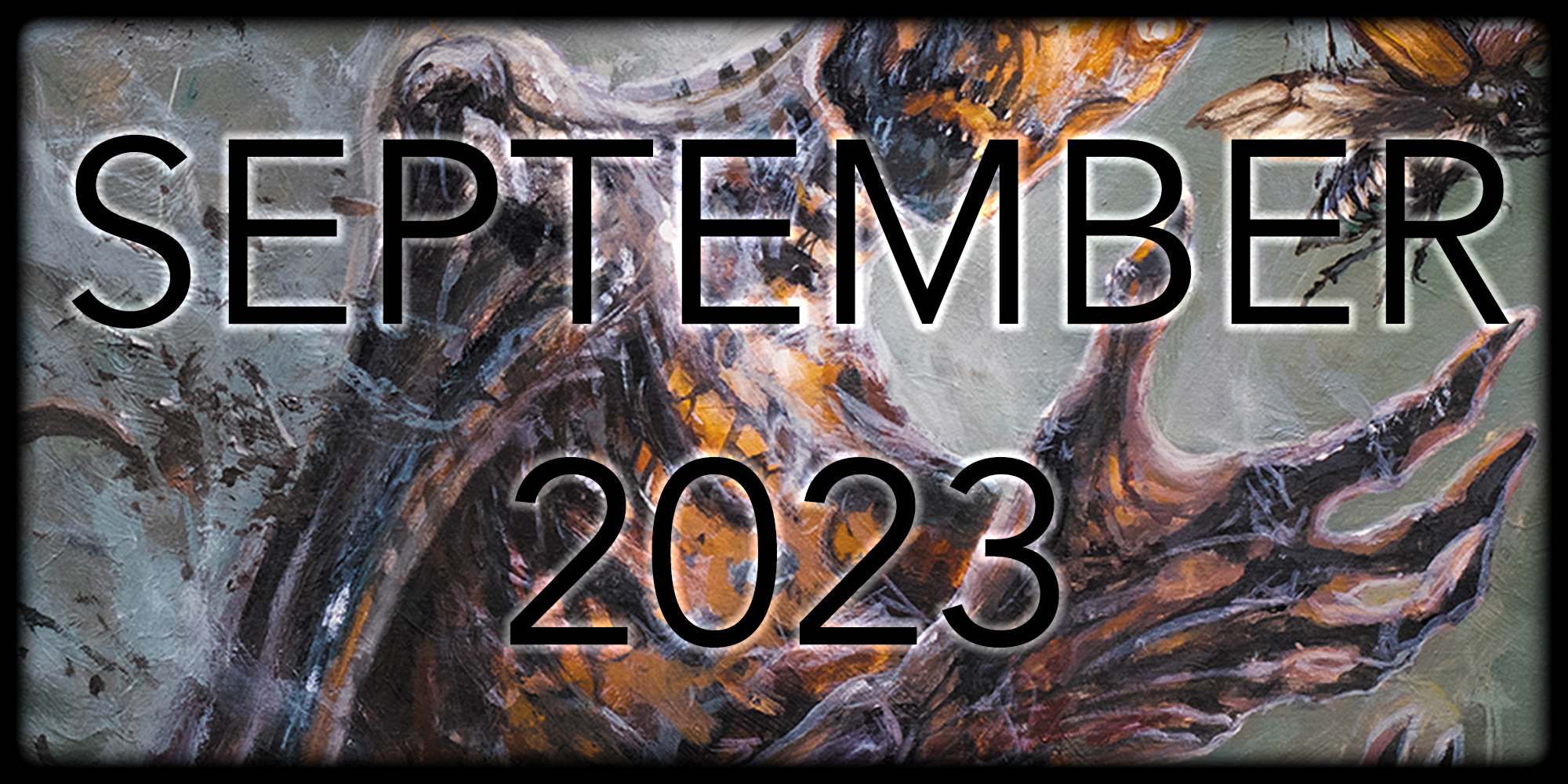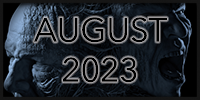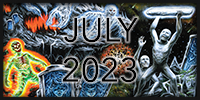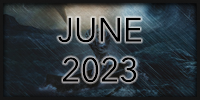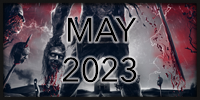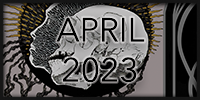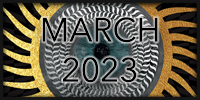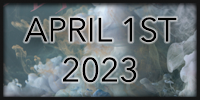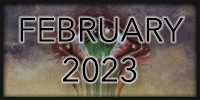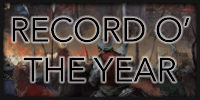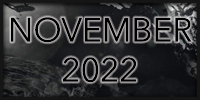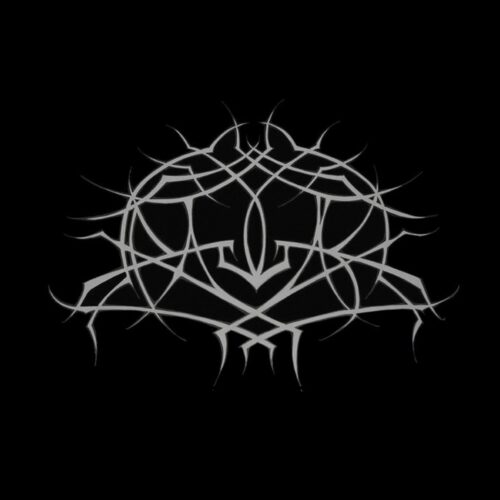
Since bursting onto the metal stage with their 2008 eponymous debut, Queens, New York’s Krallice has been a relentless presence in American black metal. There is, of course, the musical influence they wield as some of the foremost purveyors of mathy technicality and voracious experimentation in their chosen sub-genre. But as impressive as they are for carving out a truly unique aesthetic over 10 full-lengths and several eps, Colin Marston, Mick Barr, Nicholas McMaster, and Lev Weinstein are equally so for the incredible reach they have through the dozens of other bands they contribute to as members or occasional collaborators. Among the names that crop up in a “Degrees of Extreme Metal Kevin Bacon,” you could play with Krallice are Anicon, Ash Borer, Behold…the Arctopus, Castevet, Geryon, Gorguts, Imperial Triumphant, Panopticon, Ruin Lust, Vanum, Wayfarer, Woe, and Yellow Eyes. As if this weren’t enough to cement their importance to the American scene, Colin Marston is a prolific producer responsible for recording, mixing, or mastering albums by a positively ludicrous number of bands big and small.
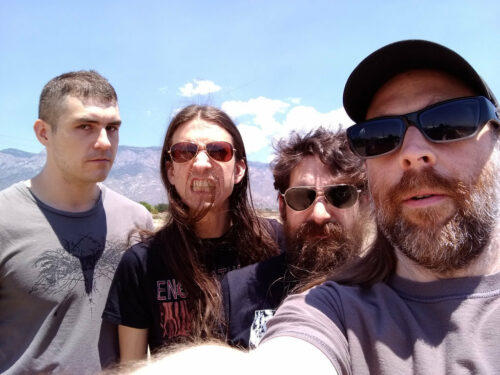
Until just a year ago, the conventional wisdom was that you could neatly bisect the Krallice catalog with a line between Years Past Matter and Ygg huur. Through YPM, the formula was mathematical, progressive black metal that never lost the melodic thread. Albums organized around twin guitar riffs that synced and dissolved through logical progressions, with motifs repeating and mutating over lengthy tracks and hour-plus albums. From Ygg huur on, Krallice paradoxically become terser and more expansive. Where repetition and deconstruction of themes was the previous MO, the band now took an “Alright, I’m only going to say this once” approach to their organizing ideas, their riffs, and even their release strategy, with albums dropping on Bandcamp with little to no warning. Song and album lengths became much shorter, while song structures became more labyrinthine. A third major direction was introduced just last year with Demonic Wealth, suddenly featuring heavy use of atmospheric synths and a more traditional black metal sound without sacrificing mathematical technicality. This continues through the forthcoming Crystalline Exhaustion.
–Cherd
Cherd
If you’ve read our previous AMG Goes Ranking lists, this is usually the part where the writer says such and such band was their gateway to metal and how their cats are named after the bassist and drummer. Make no mistake, Krallice is no gateway band. I became aware of them through metal sites just like this one when I was in art grad school, and with a head already full of critical theory and aesthetic experimentation, I took to them immediately. There are others who play dense, technical black metal, but not like Krallice. They’re in a category of one.
The Ranking

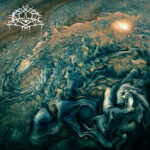 #9: Mass Cathexis (2020) – I quite liked this upon initial release, but repeat listens have pushed it down the list. Mass Cathexis sees the band edging closer to tech death at times, but it largely performs the same tricks as Loüm and Prelapsarian before it. Still, there’s a three-song stretch including the title track, “The Form” and “The Formed” that makes a nice microcosm of the band’s phase two aesthetic range. Dave Edwardson again provides guest vocals on “Mass Cathexis,” but that song sticks the landing thanks to a more brutish approach.
#9: Mass Cathexis (2020) – I quite liked this upon initial release, but repeat listens have pushed it down the list. Mass Cathexis sees the band edging closer to tech death at times, but it largely performs the same tricks as Loüm and Prelapsarian before it. Still, there’s a three-song stretch including the title track, “The Form” and “The Formed” that makes a nice microcosm of the band’s phase two aesthetic range. Dave Edwardson again provides guest vocals on “Mass Cathexis,” but that song sticks the landing thanks to a more brutish approach.
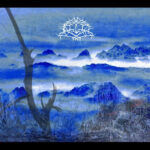
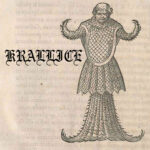 #7: Demonic Wealth (2021) – This is an unexpected new direction with plenty of room for expansion. The pandemic has at least afforded bands the opportunity to try something new as they navigate various levels of isolation, and Demonic Wealth is a fascinating result. Marston had been toying with atmospheric synths on previous albums, but here they take center stage. At times they even border on dungeon synth. Being a fan of raw black metal, I find Weinstein’s iPhone-recorded drums playing off the studio-recorded synths and guitars a much better contrast than it has any right to be. Krallice sound fresh by going a bit old school.
#7: Demonic Wealth (2021) – This is an unexpected new direction with plenty of room for expansion. The pandemic has at least afforded bands the opportunity to try something new as they navigate various levels of isolation, and Demonic Wealth is a fascinating result. Marston had been toying with atmospheric synths on previous albums, but here they take center stage. At times they even border on dungeon synth. Being a fan of raw black metal, I find Weinstein’s iPhone-recorded drums playing off the studio-recorded synths and guitars a much better contrast than it has any right to be. Krallice sound fresh by going a bit old school.
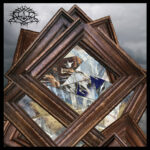
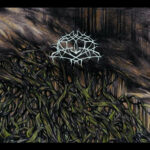 #5: Krallice (2008) – Perhaps their most straightforward black metal record, there’s still plenty of unconventional math-y weirdness in the band’s debut. There are streaks of punk that surface here and there, but the total package owes as much, if not more, to New York No Wave. It’s long, like all their first phase records, but it’s a blast and the 61 minutes fly by.
#5: Krallice (2008) – Perhaps their most straightforward black metal record, there’s still plenty of unconventional math-y weirdness in the band’s debut. There are streaks of punk that surface here and there, but the total package owes as much, if not more, to New York No Wave. It’s long, like all their first phase records, but it’s a blast and the 61 minutes fly by.
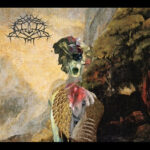
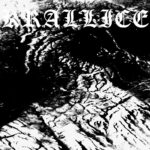 #3: Go Be Forgotten (2017) – From the treble-forward production to the high contrast black and white cover with blackletter text, Go Be Forgotten is a stark jewel in the overall discography that reminds you Krallice really are a black metal band despite indications to the contrary. It’s as reticent as any of their work conceptually, but taken as a whole, it’s the best album-wide composition in their catalog. At the time, the heavy use of synths on the title track and the instrumental “Quadripartite Mirror Realm” seemed out of left field, but it makes much more sense in light of the band’s direction post-Demonic Wealth.
#3: Go Be Forgotten (2017) – From the treble-forward production to the high contrast black and white cover with blackletter text, Go Be Forgotten is a stark jewel in the overall discography that reminds you Krallice really are a black metal band despite indications to the contrary. It’s as reticent as any of their work conceptually, but taken as a whole, it’s the best album-wide composition in their catalog. At the time, the heavy use of synths on the title track and the instrumental “Quadripartite Mirror Realm” seemed out of left field, but it makes much more sense in light of the band’s direction post-Demonic Wealth.
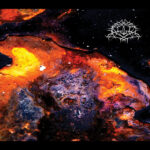

Doom Et Al
Avant-garde, hyper-technical black metal which eschews many of the staples of the genre, was never going to be everyone’s cup of tea. There’s a sense, listening to Krallice, that the band is often twisting black metal into shapes it was never intended to be contorted into. The level of intricacy and experimentation often feels beyond the ability of the music to cope, which lends Krallice albums an icy, otherworldly feel. This is compounded by the fact that the band cares not for traditional song structures, and is only peripherally interested in anything considered “catchy.” The results are often distinctly uneasy and challenging. Krallice are also hugely prolific, and, given that this is music that takes time to digest, it sometimes feels like a race just to keep up.
Krallice get painted as a band that is more intellectually interesting than emotionally satisfying; the aural equivalent of solving a particularly tricky Sudoku puzzle. This is only partly true. Listening to Krallice demands much of the listener, but the rewards are there for those willing to make the effort. And those rewards sometimes hit deep in the solar plexus. Going through their whole discography in a few days has been an unexpectedly cathartic experience for me. While listening to all ten albums is not essential, I advise those who are willing, to close their eyes, turn the brain on, and let the crazed melodies wash over you. It’s a joy.
The Ranking

 #9: Demonic Wealth (2021) – An album borne of isolation, in which all the parts were recorded separately, and it feels disjointed as a result. Krallice’s music, icy at the best of times, is positively distant in parts of Demonic Wealth. The heavy synths are interesting in parts, but often drift, sapping energy from the collection. The washed-out drumming is a huge negative, playing away from the band’s strengths by making the sound less immediate. Despite interesting parts, Demonic Wealth is one of the less essential listens in a stellar catalog.
#9: Demonic Wealth (2021) – An album borne of isolation, in which all the parts were recorded separately, and it feels disjointed as a result. Krallice’s music, icy at the best of times, is positively distant in parts of Demonic Wealth. The heavy synths are interesting in parts, but often drift, sapping energy from the collection. The washed-out drumming is a huge negative, playing away from the band’s strengths by making the sound less immediate. Despite interesting parts, Demonic Wealth is one of the less essential listens in a stellar catalog.
 #8: Mass Cathexis (2020) – The most fractured, edgy Krallice album on the list, again featuring Neurosis’ Dave Edwardson, but in a more integrated role. It continued the trend of shorter, more focused tracks begun with Ygg huur, but it also embraced the contrapuntal pull of their later work, whereby dissonance and atypical rhythmic modulation alternated rapidly. There is interesting stuff here aplenty, but despite being intriguing, the band is never quite able to hit its stride, as if the constant jumping between styles threw them off.
#8: Mass Cathexis (2020) – The most fractured, edgy Krallice album on the list, again featuring Neurosis’ Dave Edwardson, but in a more integrated role. It continued the trend of shorter, more focused tracks begun with Ygg huur, but it also embraced the contrapuntal pull of their later work, whereby dissonance and atypical rhythmic modulation alternated rapidly. There is interesting stuff here aplenty, but despite being intriguing, the band is never quite able to hit its stride, as if the constant jumping between styles threw them off.



 #4: Go Be Forgotten (2017) – Where Krallice’s ambition sometimes exceeds its grasp, Go Be Forgotten, with its retro cover, represents the band tying in its more aggressive tendencies with a confidence forged from many years in the studio. It’s like Ygg huur but with more playfulness and focus. It’s the perfect mix of their “old” and “new” sounds, and it’s also relatively accessible by Krallice standards. Even the long, ambient “Quadripartite Mirror Realm,” which divides the album in two, feels purposeful and interesting. Their most enigmatic, yet entertaining effort, which looks both forwards and backward, in a way only Krallice could manage.
#4: Go Be Forgotten (2017) – Where Krallice’s ambition sometimes exceeds its grasp, Go Be Forgotten, with its retro cover, represents the band tying in its more aggressive tendencies with a confidence forged from many years in the studio. It’s like Ygg huur but with more playfulness and focus. It’s the perfect mix of their “old” and “new” sounds, and it’s also relatively accessible by Krallice standards. Even the long, ambient “Quadripartite Mirror Realm,” which divides the album in two, feels purposeful and interesting. Their most enigmatic, yet entertaining effort, which looks both forwards and backward, in a way only Krallice could manage.
 #3: Krallice (2008) – A startling debut that showcased Krallice’s hyper-technical, abstract riffs but in an energetic and remarkably accessible way. Krallice’s music was never warm, but Krallice was about as inviting as it would ever get. It’s neither as technically demanding, nor as boundary-pushing as the albums that followed, but it is nevertheless fully formed with a distinct and unique sound that would be expanded upon later. It’s a personal favorite and a joy to listen to.
#3: Krallice (2008) – A startling debut that showcased Krallice’s hyper-technical, abstract riffs but in an energetic and remarkably accessible way. Krallice’s music was never warm, but Krallice was about as inviting as it would ever get. It’s neither as technically demanding, nor as boundary-pushing as the albums that followed, but it is nevertheless fully formed with a distinct and unique sound that would be expanded upon later. It’s a personal favorite and a joy to listen to.


AMG’s Official Ranking:
#10: Loüm (2017)
#9. Mass Cathexis (2020)
#8. Demonic Wealth (2021)
#7. Diotima (2011)
#6. Prelapsarian (2016)
#5. Krallice (2008)
#4. Go Be Forgotten (2017)
#3. Ygg huur (2015)
#2. Dimensional Bleedthrough (2009)
#1. Years Past Matter (2012)
